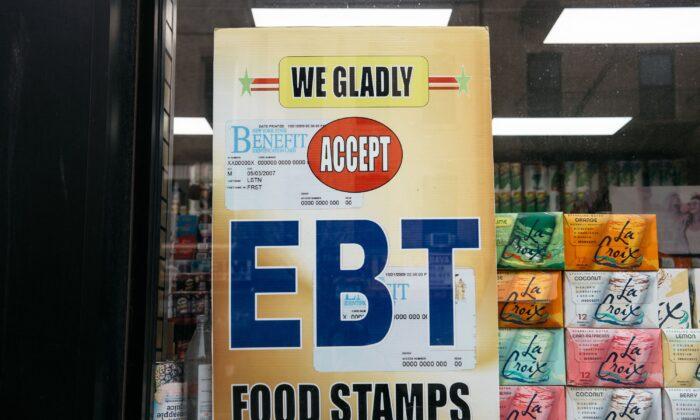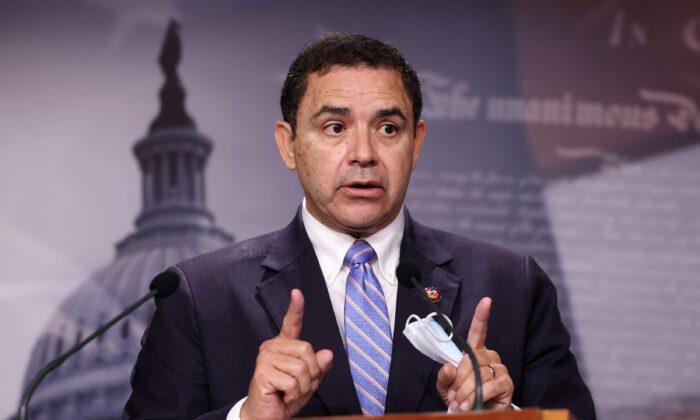As food prices continue to soar nationwide, the U.S. Department of Agriculture (USDA) states as of this month that pandemic-era food stamp benefits will end, while families receiving those benefits say they’re being put in a financial bind.
“I didn’t even know this was happening until I saw it on the news last night,” Gale Gurule, who is a single mother with two children in Sacramento, California, told The Epoch Times. “Right now, I get the maximum amount, but I hear I’m going to get about $200 less and these kids love to eat.”
“I’m on a fixed income as it is. I wish Biden would do something about this,” said Gurule. “My benefits will be gone in a week with the cost of meat alone and prices going up, we’re going to have to start eating cheap processed foods.”
Californians to Feel the Pinch
When millions of people lost their jobs at the start of the COVID-19 pandemic, Congress passed the Families First Coronavirus Response Act, which was signed by then-president Donald J. Trump on Mar. 18, 2020, and provided an Emergency Allotment of SNAP benefits until the end of the pandemic.That means that since March 2020, most households on SNAP received an extra benefit of $95 per month.
In California, the nation’s most populous state, food bank officials say individuals and families relying on SNAP benefits are really going to feel the pinch.
“The ending of emergency allotments will impact all five million Californians currently on CalFresh [known as SNAP nationally]—which is about three million households,” Lauren Lathan Reid, director of communications and member engagement of the California Association of Food Banks, told The Epoch Times. “The average person is expected to lose about $82 per month, and the average household will lose about $200 per month. This is going to create widespread hardship and increase hunger throughout our state. Especially now, with the high cost of groceries and a struggling California economy.”
Reid went on to say that the reduction in benefits will not only hurt families but also put extra strain on food banks as well. “Food banks have been stretched since the onset of the pandemic, and anticipate that now even more Californians will turn to them to fill their fridges and pantries.”
What’s Next?
The boost in food stamp benefits was only supposed to be temporary until the pandemic ended; but in 2021, several Democrats in Congress proposed making an increase to the baseline of SNAP benefits by 30 percent permanent through a piece of legislation called the Closing the Meal Gap Act. The legislation was sponsored by Senator Kirsten Gillibrand (D-N.Y.), along with senators Bernie Sanders (I-Vt.), Cory Booker (D-N.J.), Alex Padilla (D-Calif.), Elizabeth Warren (D-Mass.), and Rep. Alma Adams (D-N.C.)“The United States was already facing a severe food crisis before the COVID-19 pandemic hit. We live in the richest nation in the world, and yet 42 million Americans are struggling with food insecurity. This is unacceptable,” Gillibrand stated at the time. “SNAP provides a critical lifeline for so many families, and it needs support more than ever to meet the needs of SNAP recipients. I am proud to work with Congresswoman Adams on the Closing the Meal Gap Act of 2021 to enhance SNAP benefits, break down the barriers to eligibility, and keep food on the table for all Americans.”
“A modernized Thrifty Food Plan is more than a commitment to good nutrition—it’s an investment in our nation’s health, economy, and security,” said Agriculture Secretary Tom Vilsack. “Ensuring low-income families have access to a healthy diet helps prevent disease, supports children in the classroom, reduces health care costs, and more.”
Top House Republicans meanwhile are looking at ways to cut SNAP benefits to further reduce the nation’s debt.





